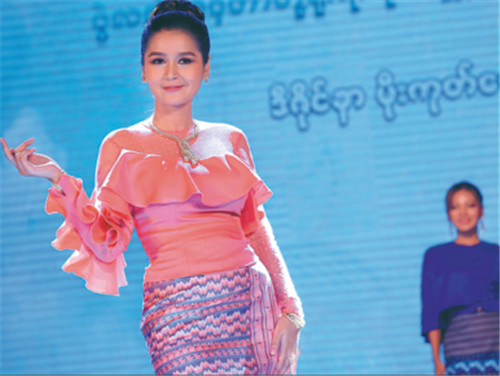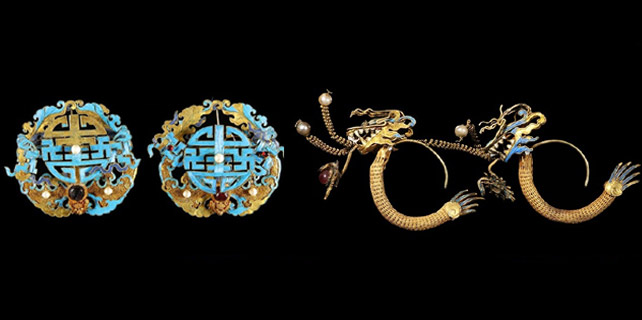Myanmar designers put twist on local fashion
 |
|
Models present traditionally inspired designs at the Myanmar women's traditional culture and dressing style show at the National Theater in Yangon. [Photo/Agencies] |
With Myanmar emerging as a manufacturing hub for mass-produced clothes, a crop of young designers are using home-grown fashion to preserve the country's sartorial heritage.
Inside her boutique in downtown Yangon, Pyone Thet Thet Kyaw crafts her own designs using traditional patterns and fabrics, many from ethnic minority groups, to make A-line skirts, dresses and tops.
On another she adds the high-collared neckline of the inngyi-a tight top usually worn by Myanmar women along with a fitted, sarong-like skirt-to a flirty pleated dress.
"We Burmese really care about our ethnic and traditional clothes," she says in the shop, over the whir of sewing machines.
"When you modernize the traditional patterned clothes you have to be careful they're not too flashy-or too modern."
Myanmar is fiercely proud of its traditional clothes, which were largely protected from the influx of homogenous Western fashion now ubiquitous across Southeast Asia.
Designer Ma Pont says she was not allowed to show even a flash of shoulder or armpit when she used to make clothes for TV channels in the 1990s.
But while many still prefer traditional clothes, especially the sarong-like longyi worn by both men and women, fashions are starting to change.
Shopping malls aimed at Yangon's growing middle class are sprouting up around the city, while on its fringes factories are churning out clothes for international brands.
It is a flip-side of the industry which boutique designer Pyone Thet Thet Kyaw has seen first-hand.
As a teenager she spent months in garment factories on the outskirts of the commercial capital.
The experience made her determined to open her own boutique and train young women in the art of clothes-making.
Myanmar is swiftly becoming a new hub for massive garment factories making cheap clothes for fashion giants like H&M and Primark.
Exports more than doubled to $1.65 billion last financial year, according to official data, and are expected to surge after the United States lifted its sanctions in October.
But while the sector is helping to drive rapid economic growth, critics say few benefits are trickling down to workers.
Meanwhile, other local designers, like Mo Hom, are working to save Myanmar's centuries-old traditional fabric industry from the influx of cheap imported clothes.
Her boutique in Yangon is filled with colorful designs in cotton and silks sourced from Chin and Shan states, where they can take months to weave by hand using traditional wooden looms.
Many are dyed with natural substances such as green tea and strawberries to give subtle colors, which she mixes with traditional ethnic patterns and silhouettes.
"Local mills are actually dying because there is no market demand any more," says Mo Hom, who trained and worked as a designer in New York before moving back to Myanmar in 2012.
"A lot of the mills are actually closing down."
FRANCE-PRESSE









